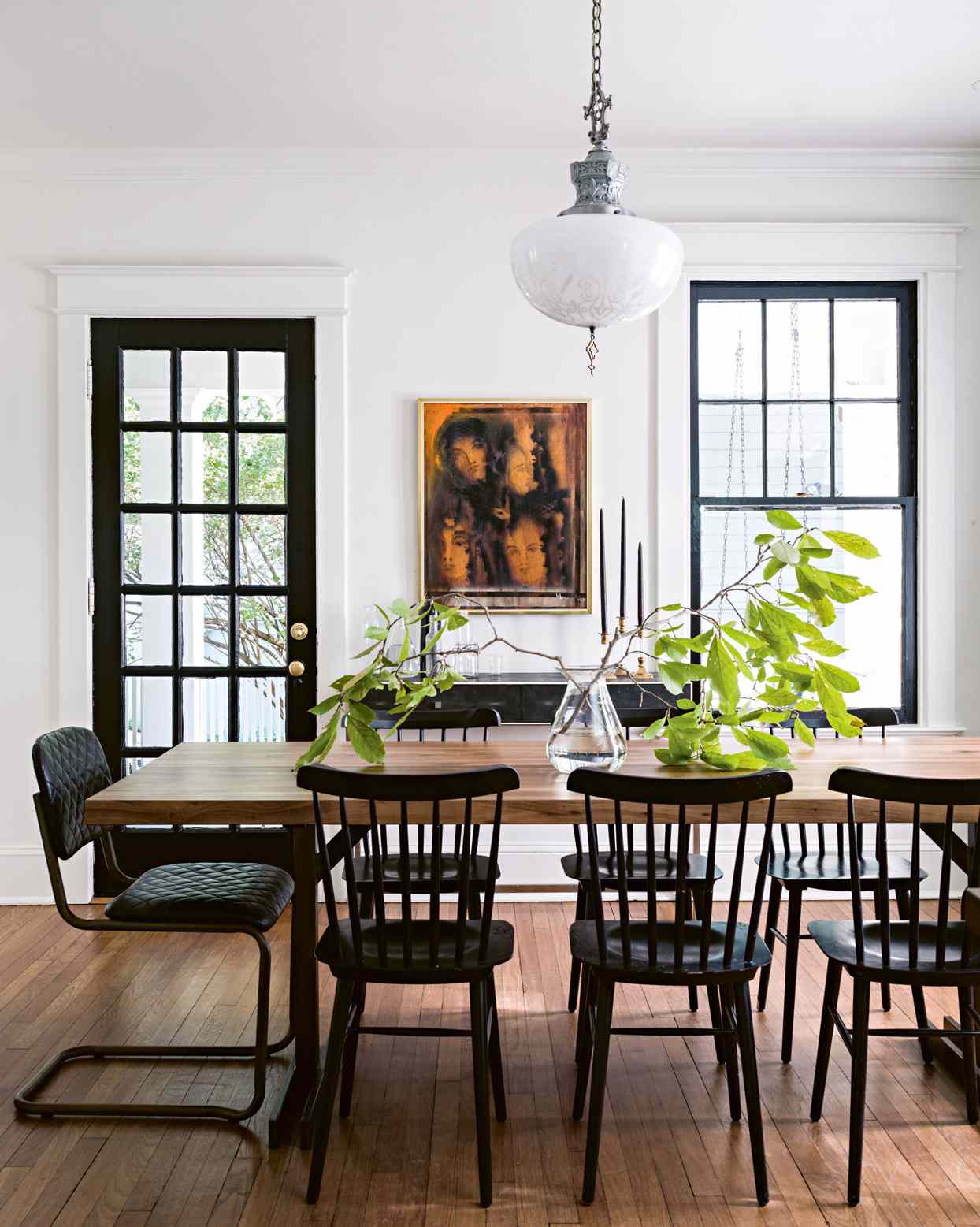We're Putting Up Walls Again—Is the Open Floor Plan on Its Way Out?
In the interior design industry, trends can come and go faster than you can drape a throw blanket over your sofa or armchair. More times than not, what was once considered out of fashion or a faux pas has its way of making a comeback. And, as it turns out, our home's layout falls into that cyclical process. Over the past few months, we've been noticing the rise in rooms—not just designated areas of a larger space, but sectioned-off spaces complete with four walls. So, what gives? Is the open floor plan on its way out? Admittedly, it depends on who you ask.
For New York-based designer Madeline Merin, the shift to proper rooms has been a long time coming. "People who grew up in [constrained spaces] wanted a more open, casual feeling as they created their own homes," she shares. "Home sizes have continued to grow ever larger—the average size of homes [in the United States] has more than doubled from 1,000 square feet in 1950 to 2,300 square feet in 2020—and people are seeing a need for greater definition of the increased space they have to work with." As a result, Merin says that clients are realizing that the unused space in their homes would better serve their families if they could have their own distinct purposes. For other designers, the decline of the open floor plan is a sign of times—namely, the ongoing pandemic. "I think we are all craving more of that variety and definition in our spaces, especially after spending so much time in our homes since the pandemic began," designer Lilse McKenna explains. "I think a bit of the magic of moving from room to room, with different moods and atmospheres, is also lost if the spaces are not divided."
Over the past two years, our homes have become a lot more than where we sleep, make breakfast, and unwind after a long day. And, thanks to the rise of formal rooms, dwellers can have a designated place to take Zoom calls, enjoy dinner, and watch a movie come evening. Practicality isn't the only thing sectioned-off spaces have to offer; they also have their share of design perks, too. "[They] give you the opportunity to add more diversity and take more design risks," says designer Sarah Lederman. "I would use a punchy wallpaper in a dining room, but would not be so bold in a larger, multi-use space."
Unless you have a home with sectioned-off rooms or an unlimited budget for an invasive renovation, it may be tricky to embrace this phenomenon in an existing open floor plan. Fortunately, Lederman says it is possible to fake the look. "You can separate the living area from the dining through the use of bookshelves, folding screens, or even just through furniture layout," she shares.
Though many designers favor separate rooms, not everyone thinks open floor plans are a thing of the past. For Gioi Tran, co-founder and principal designer of a San Francisco-based firm called Applegate Tran, open floor plans might be just what everyone needs in 2022. "The adjustment for many of us to work and oversee our children going to school from home has brought to light a need for separated spaces, where we can head to another room and close the door," he says. "But, the idea of everyone in a household coming together to prepare meals, watch television, and engage with one another in the living room promotes the feeling of connectivity and closeness that I don't think people would choose to go without."
Tran also points out that since most people are multitasking—making lunch while listening in on an important call, perhaps—an open floor plan is more conducive with a dweller's ever-changing needs. "An excellent amount of versatility comes with an open floor plan," he adds. "With fewer walls that separate one room from the next, multitaskers [who are] working from home can, for example, watch their children playing in the living room while working from the dining room table. And at night? They can cook dinner while keeping an eye on the homework situation."
So, open floor plan or closed-off rooms? Ultimately, the choice is yours. "We see the benefits to either way of living," say Hillary Kaplan and Miriam Silver Verga, the design duo behind Mimi & Hill. "Rooms can have their own distinct personality and color story in a traditional layout whereas an open floor plan demands a more cohesive color story and level of formality or casualness. The home you have tells a story to which we believe you should listen."


